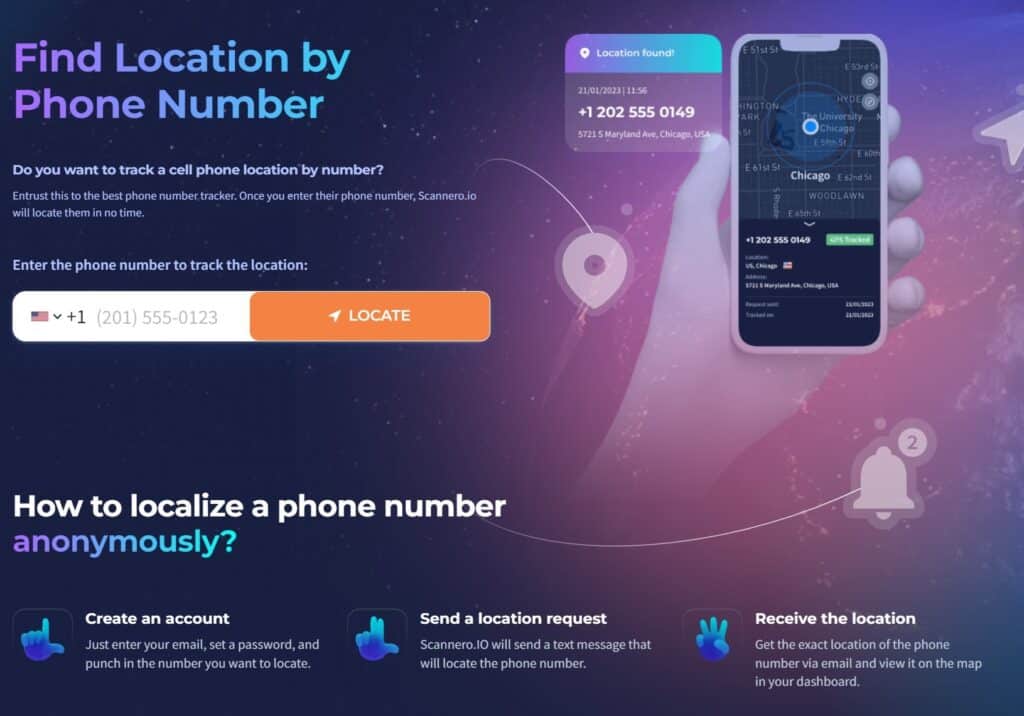In a reality where everyone and everything is tracked, some for marketing and some for more malicious purposes, one of the pinch points is tracking via text message. Given the development of technology, it’s not surprising that this is possible, but how exactly? Can you be tracked by responding to a text?
HeyLocate.mobi blog explained comprehensively how someone can track your location from a text. It should be said right away that many services provide such an opportunity on quite legal grounds — for parental control or to share the location with someone with the consent of the parties. In this article, we will consider three main options.
Contents
How Is It Possible to Track Location by Text Message?
Tracking someone’s location from a text message is possible through different options, but the main are:
- GEOtagging
- Tracking Links
- Triangulation and silent SMS
GEOtagging
Geotagging refers to the process of adding geographical metadata to various media, such as photos, videos, and text messages. In the context of SMS messages, geotagging involves embedding geographic coordinates (latitude and longitude) within the message’s metadata.
Many smartphones have location services enabled by default. When you take a photo or send a text, your phone may embed location data in the file. If this information is shared, someone can pinpoint your whereabouts with frightening accuracy.
Tracking Links
A common method used by cybercriminals involves sending a seemingly innocent link within a text message. When you click on the link, it can activate location-tracking scripts on your device, allowing the sender to monitor your movements.
Tracking links themselves typically do not directly track a user’s physical location. Instead, they are used to monitor and collect data about user interactions with online content, such as websites, ads, or emails. However, in some cases, tracking links can indirectly reveal a user’s location based on the data collected during their interaction.
Here’s how tracking links can be used to infer a user’s location:
- Data Collection: When a user clicks on a tracking link, their click event is logged by the entity that created the link. This logging includes various pieces of information, such as IP Address, user-agent and referrer information. This data can help with finding the user’s geographic location.
- Geolocation Services: Some tracking links and associated websites might use geolocation databases to map IP addresses to geographic regions.
Location Tracking Through Silent SMS
Silent SMS tracking is often used by law enforcement agencies, but it can also be exploited maliciously.
In this technique, a text message is sent to the target device, but the recipient is unaware of its arrival. This SMS is unique because it doesn’t contain any user-visible content like a typical text message. Instead, it carries specific signaling information that is hidden from the user.
Upon receiving the silent SMS, the target device does not display or acknowledge it in any way. While the target device doesn’t respond visibly, it does start interacting with the nearest cell towers to establish its presence and signal strength.
By analyzing this data, the tracking system can triangulate the device’s location (latitude and longitude) with a reasonably high degree of accuracy.
How to Track Someone’s Location via Text Legally
Still, there are options to localize someone through text within the legal framework. Maybe you are the parent and don’t use any parental apps, or you want to request someone’s location. Then there are services that use the system of tracking links. And then it all depends on how you present this link in the SMS to your target person.
For example, there is a text message location tracker called Scannero.io. To use it, you don’t need to install anything, but you do need to create an account and then enter the SMS text online. The service adds the tracking link and sends it to the person (it can also be anonymous). When the person clicks on it, you get their location in your account.
How to Tell If Your Phone Is Being Tracked
While these signs may not guarantee tracking, they are red flags that should not be ignored:
- Battery Drain: If your smartphone’s battery life is depleting significantly faster than its typical rate, it may indicate the presence of tracking software running in the background, continually transmitting location data.
- Unusual Data Consumption: Tracking applications often utilize data to relay location information. Monitor your data usage for unexpected spikes, as this could be a potential indicator of tracking activities.
- Overheating: Excessive heat generated by your device can result from background processes, including tracking software, consuming substantial CPU resources.
- Unrecognized Apps: Scrutinize your smartphone for any unfamiliar or suspicious applications, particularly those requesting access to your location. Remove any apps that are unrecognizable or untrusted.
- Sluggish Performance: Tracking software has the potential to hinder your smartphone’s performance. If you notice a significant decrease in your device’s speed and responsiveness, it’s advisable to investigate further.
- Unexpected Text Messages: The receipt of unusual or unsolicited text messages, particularly those containing hyperlinks, might signify an attempt to compromise your device’s security.
- GPS Indicator: When your phone’s GPS indicator is active without you using location-based apps, it serves as a red flag that something may be clandestinely tracking your whereabouts.
The ability to track someone’s location through a text message is a sobering reminder of the potential risks we face in the digital age. It’s crucial to strike a balance between enjoying the convenience of modern communication technology and safeguarding your personal information. As technology continues to advance, so must our awareness and efforts to protect our digital lives.

![How Can Someone Track Your Location From a Text? 3 Ways [Explained] track location](https://www.technotification.com/wp-content/uploads/2023/09/track-location-1024x613.jpg)

